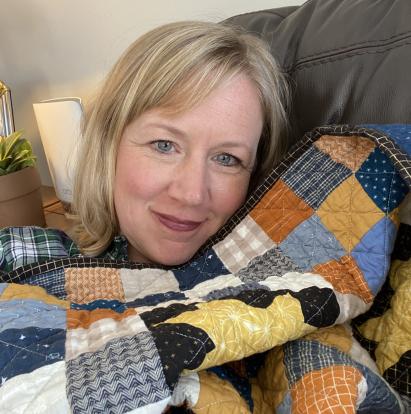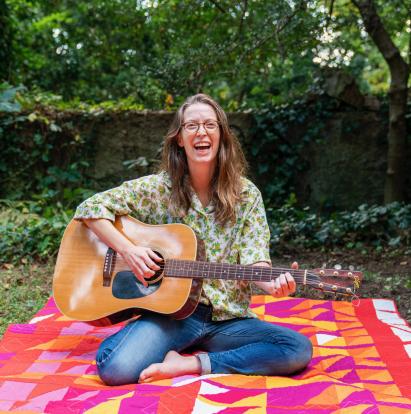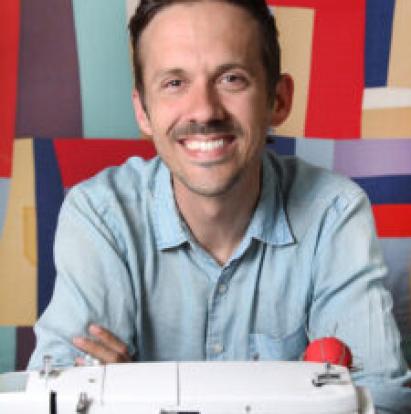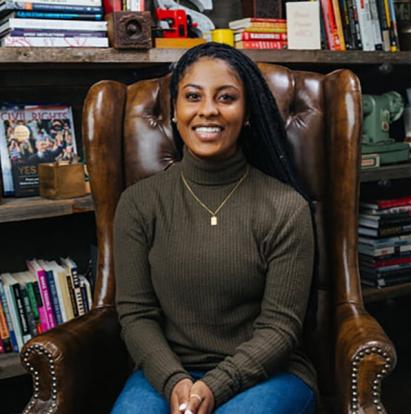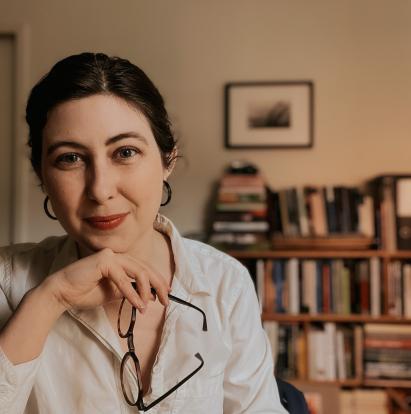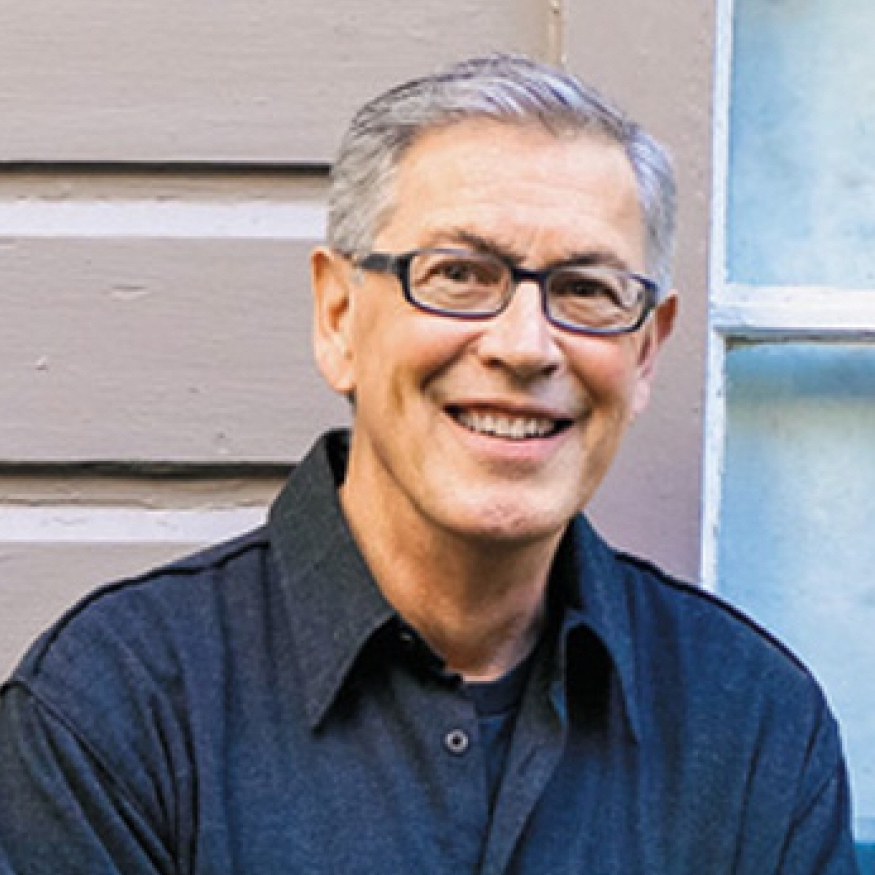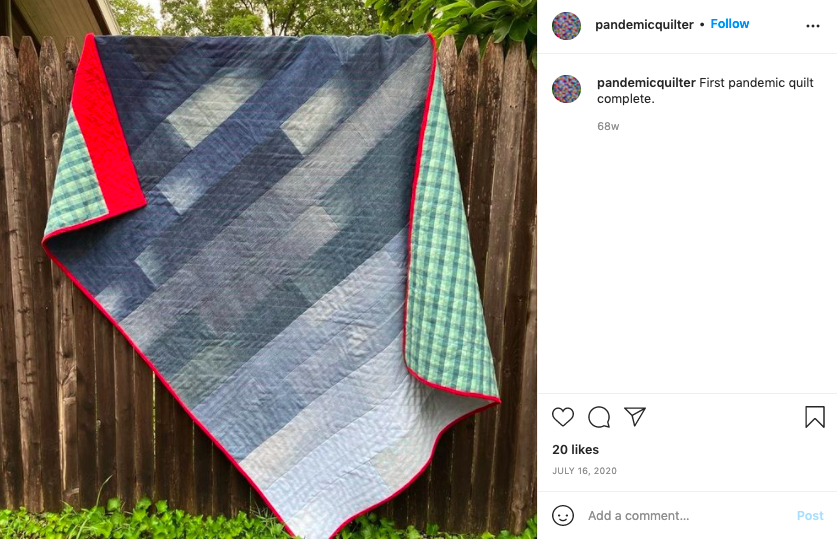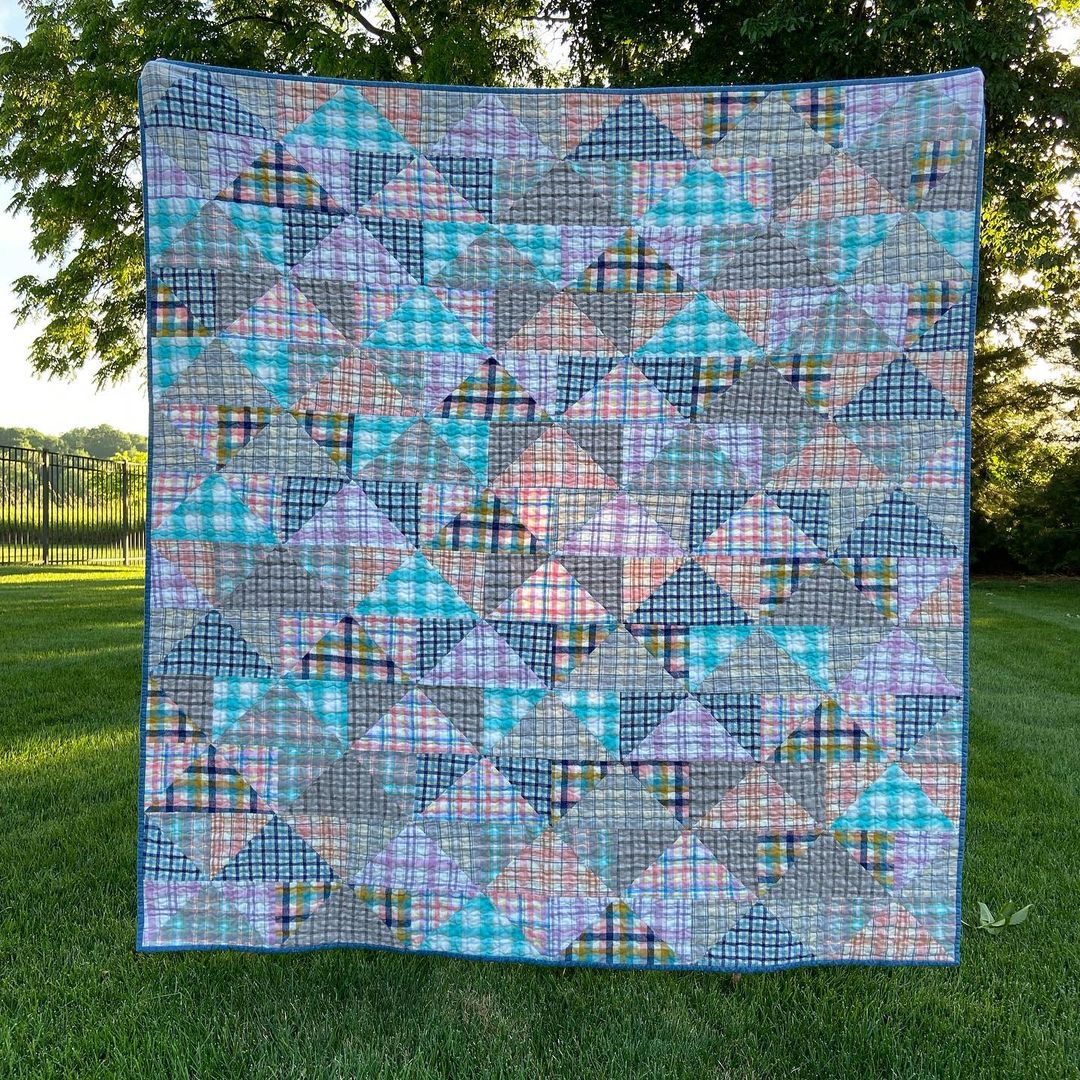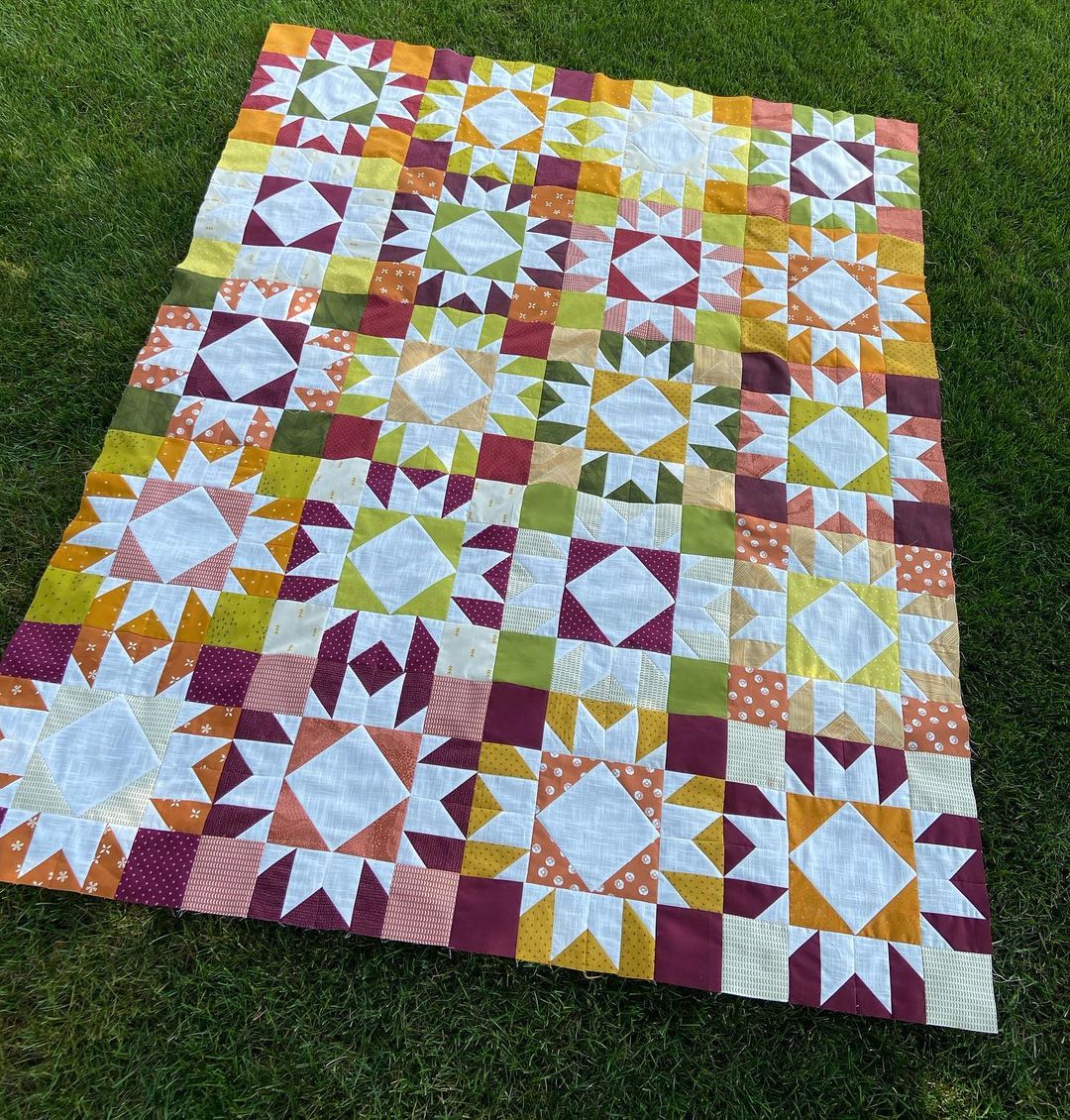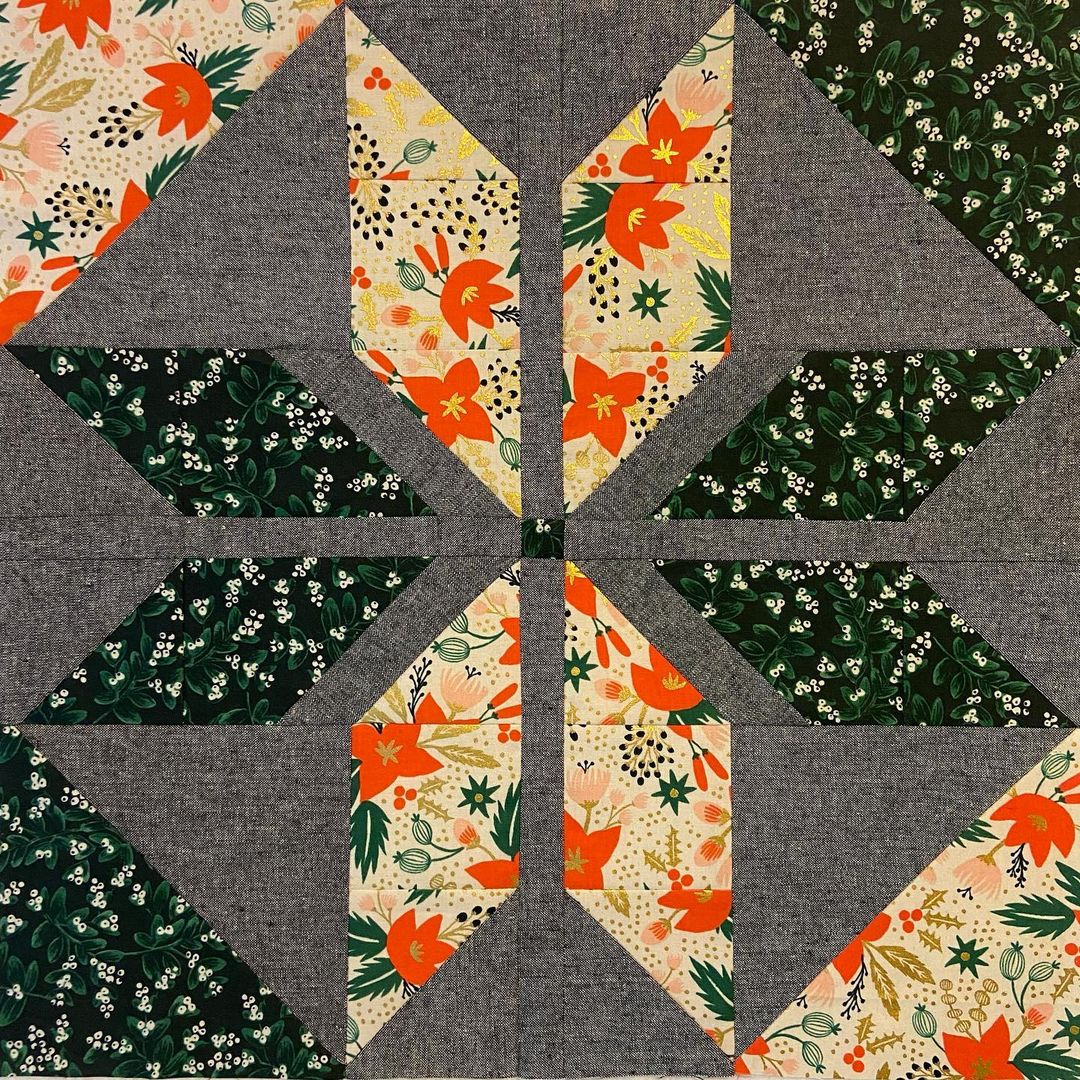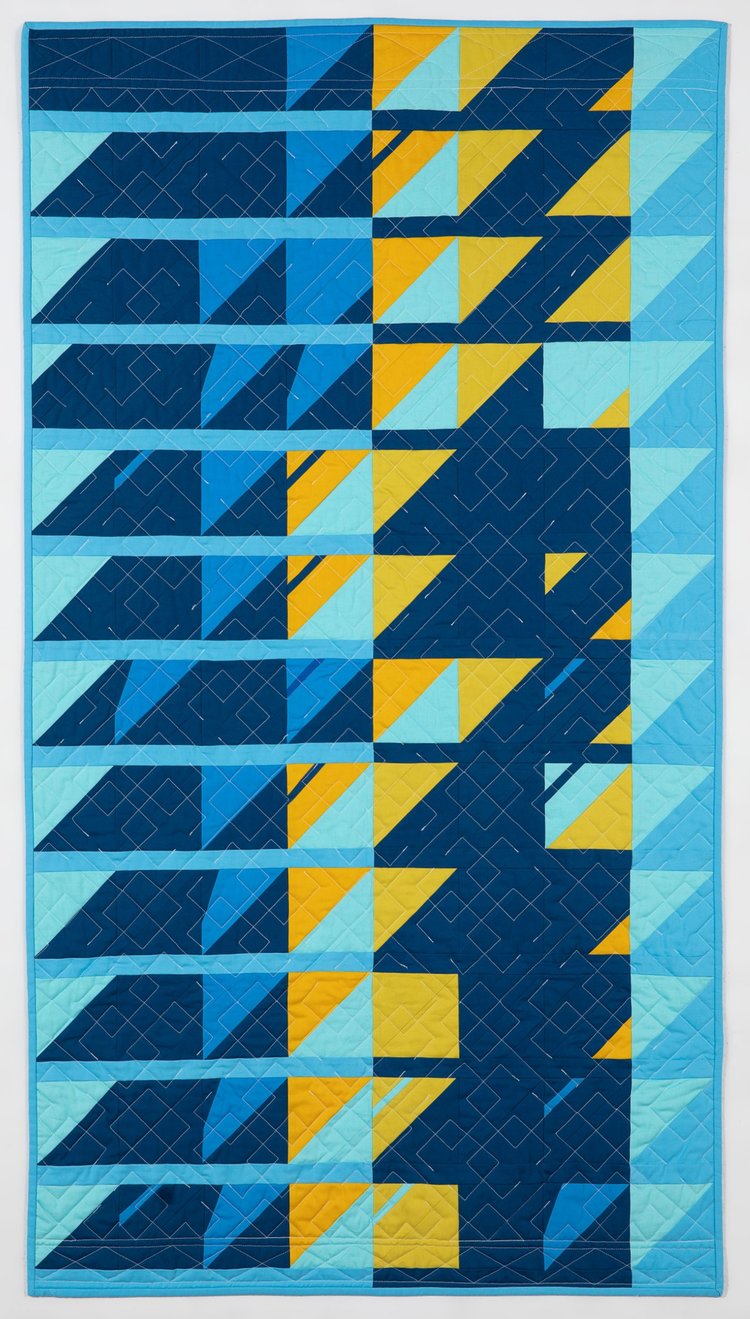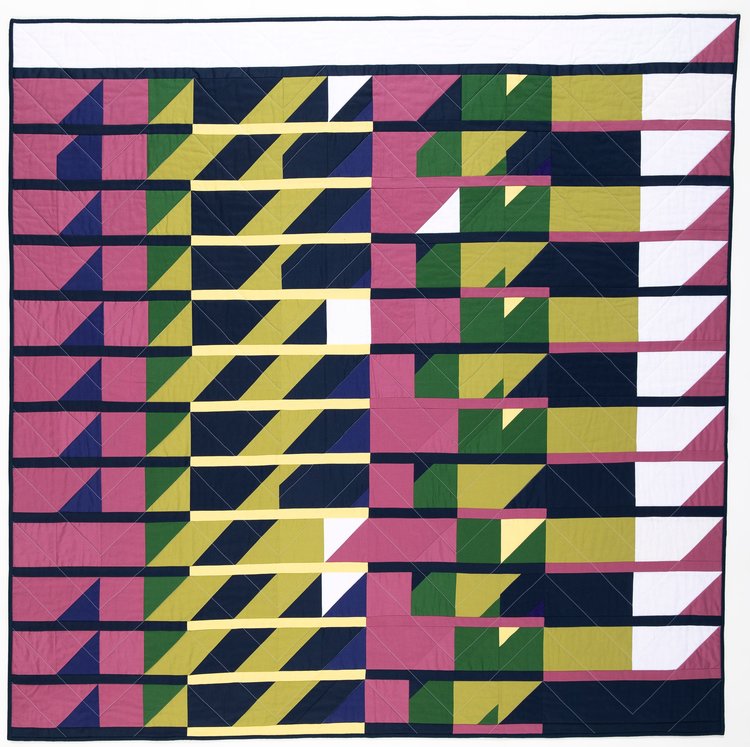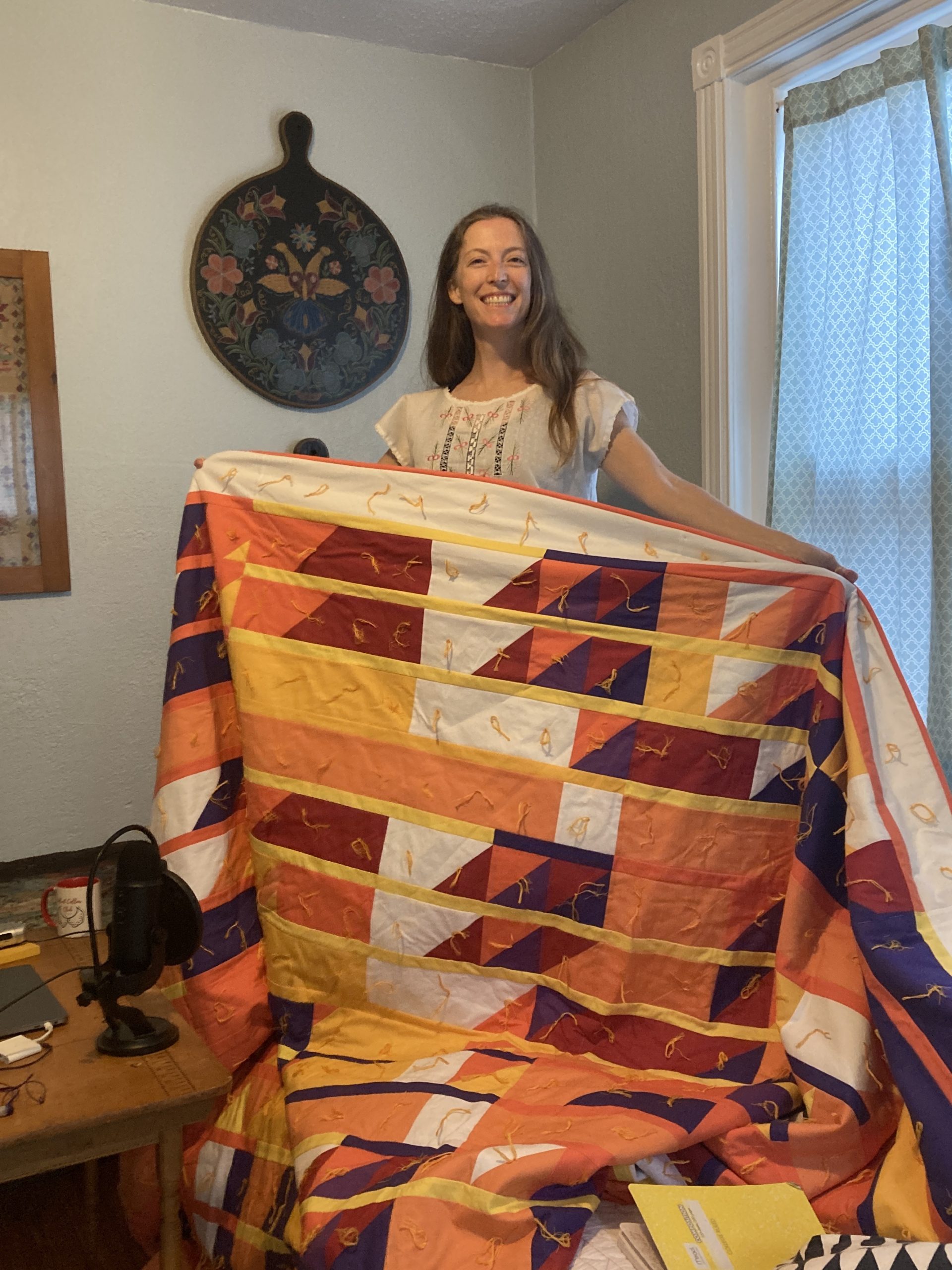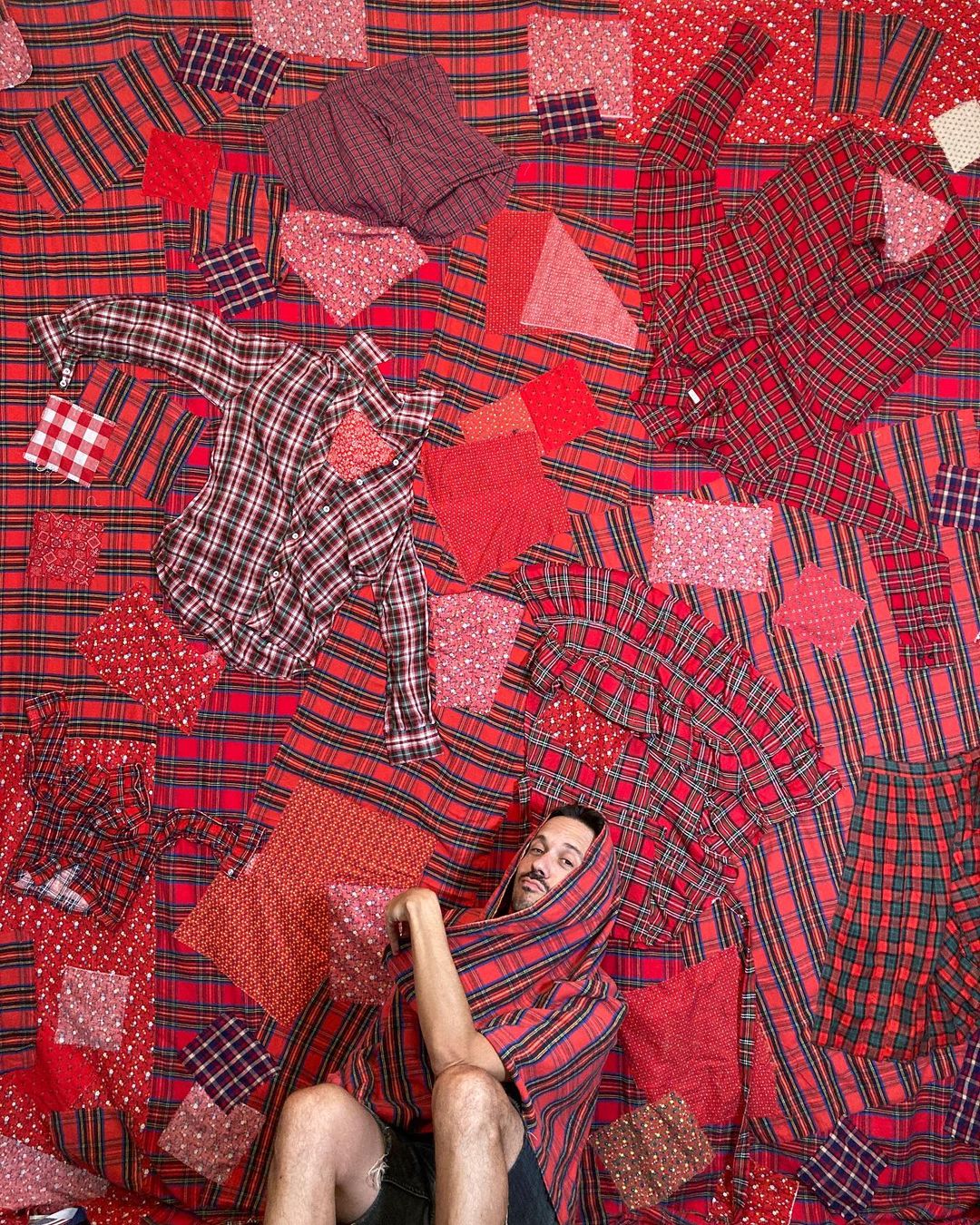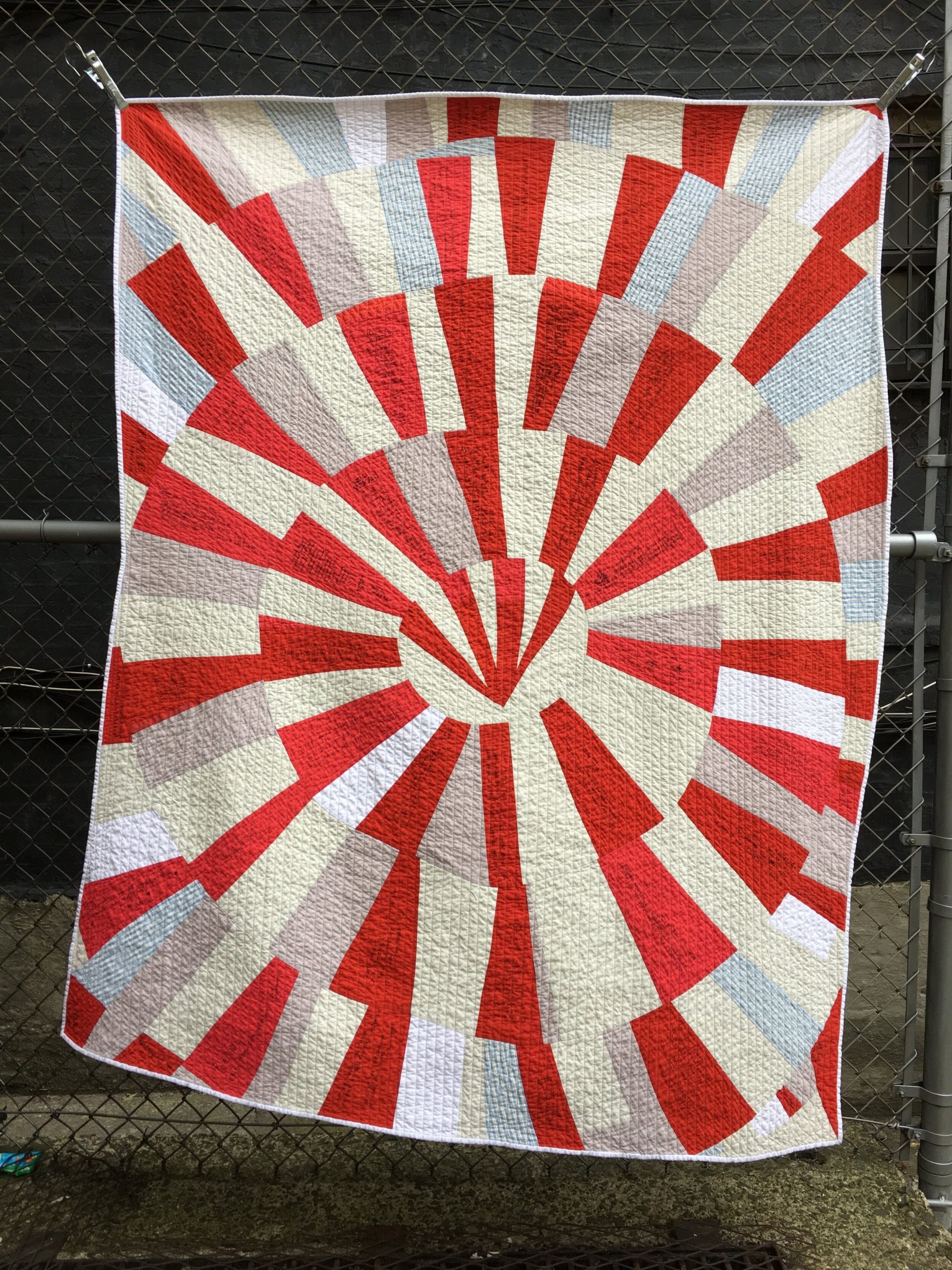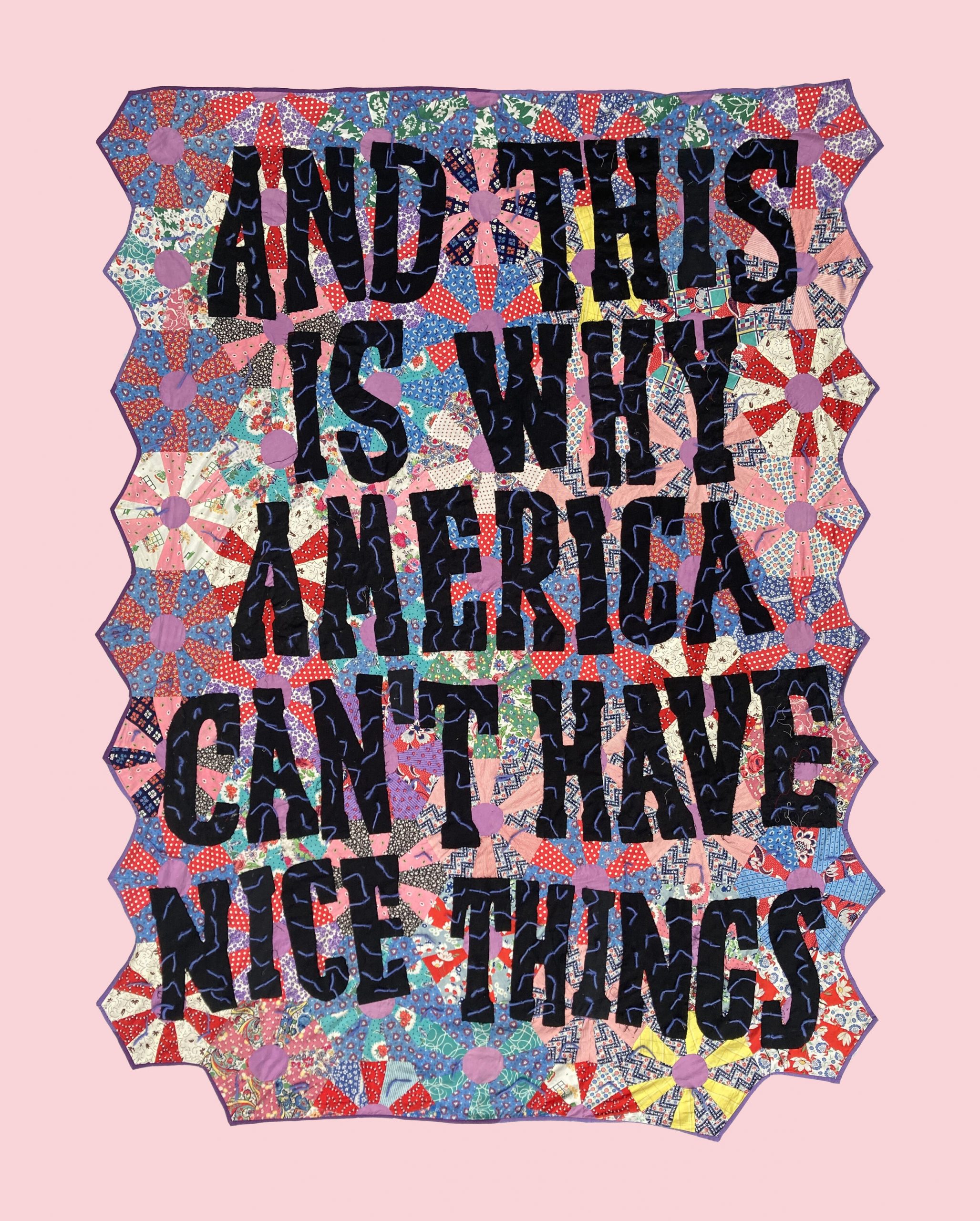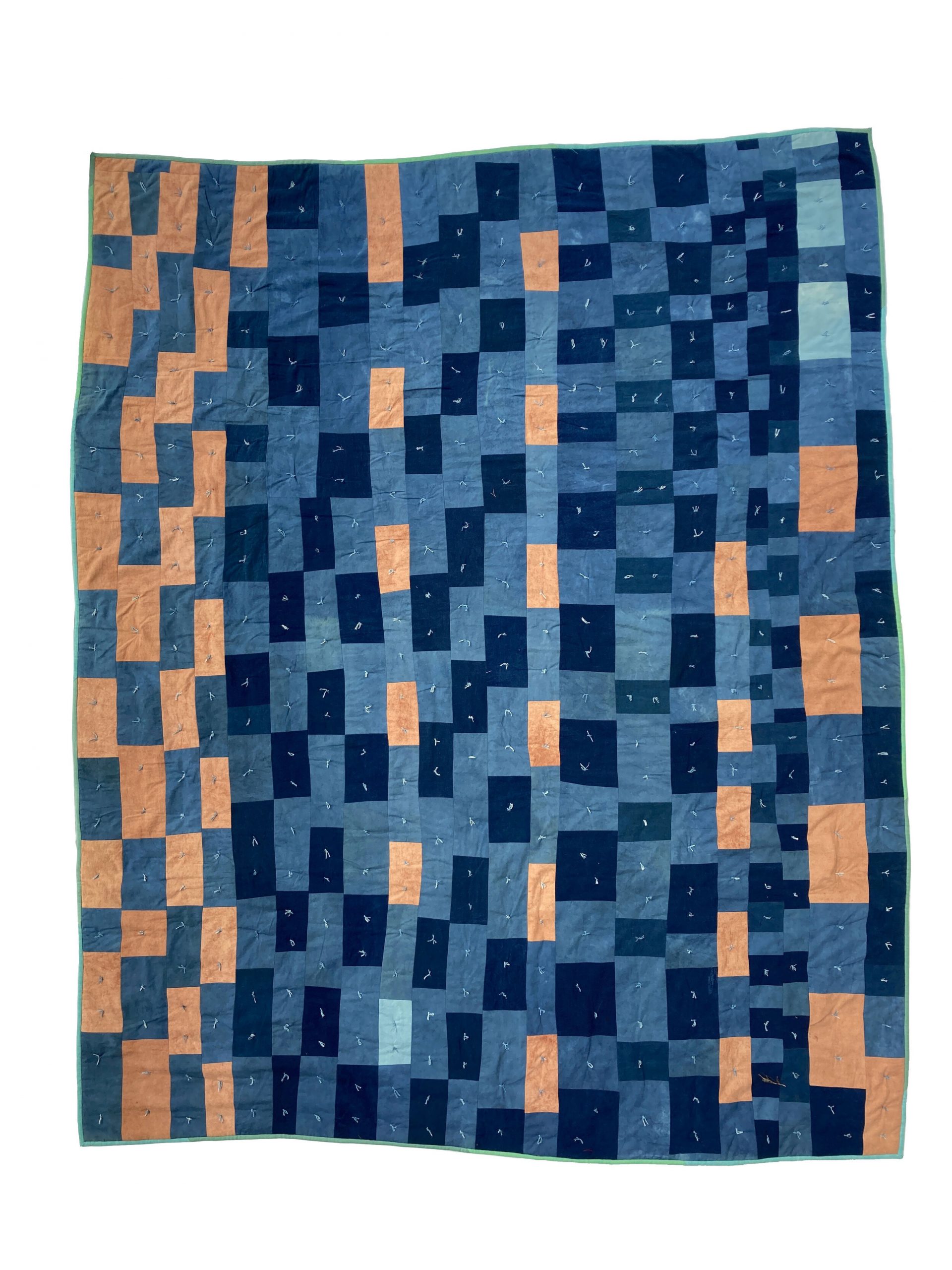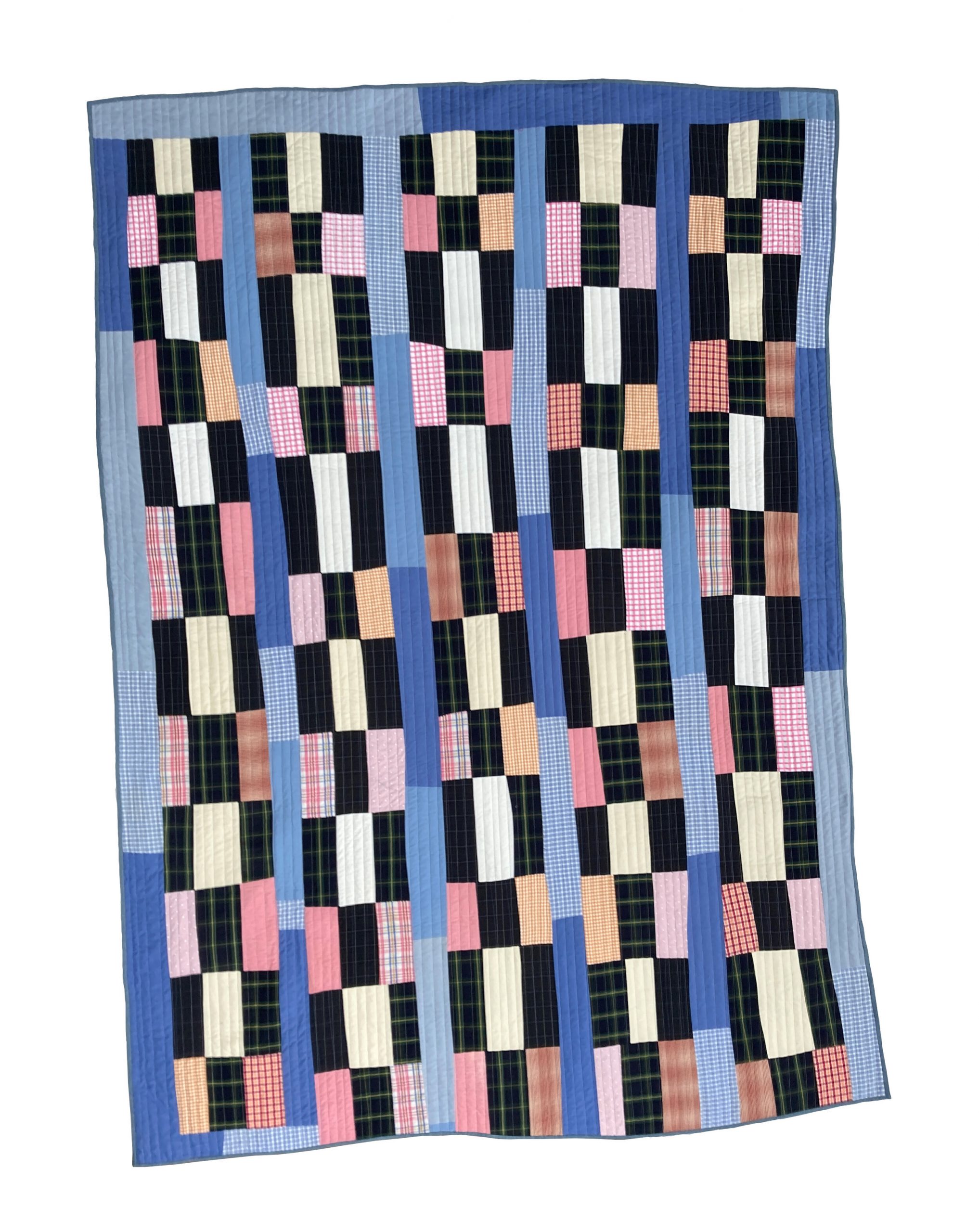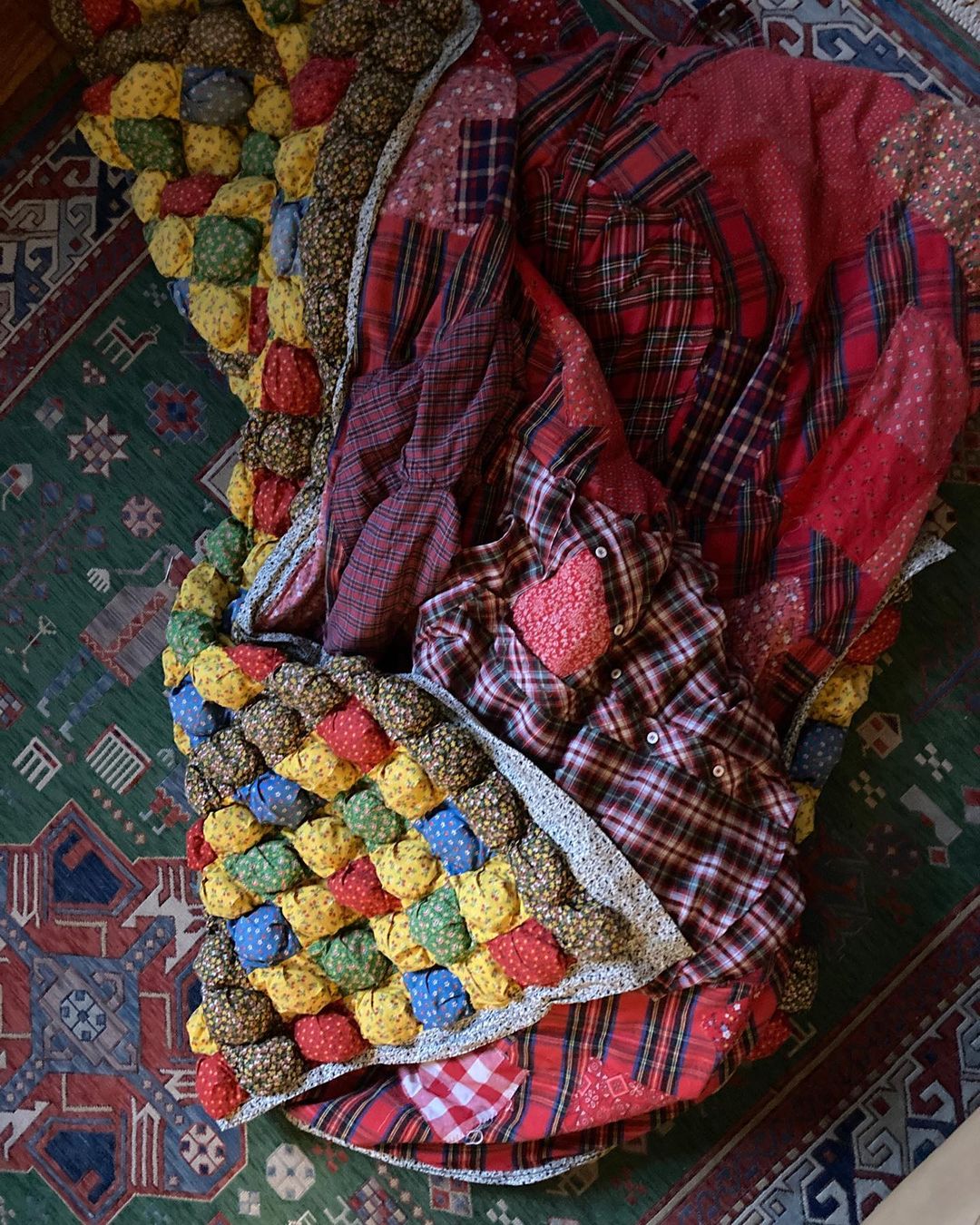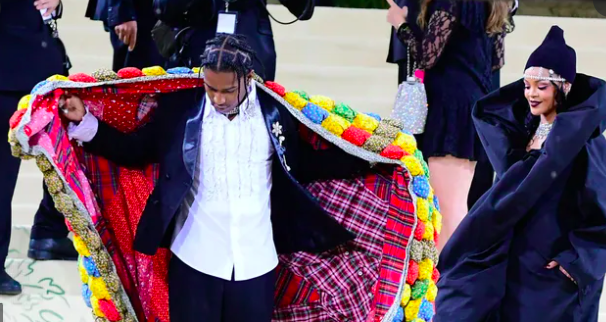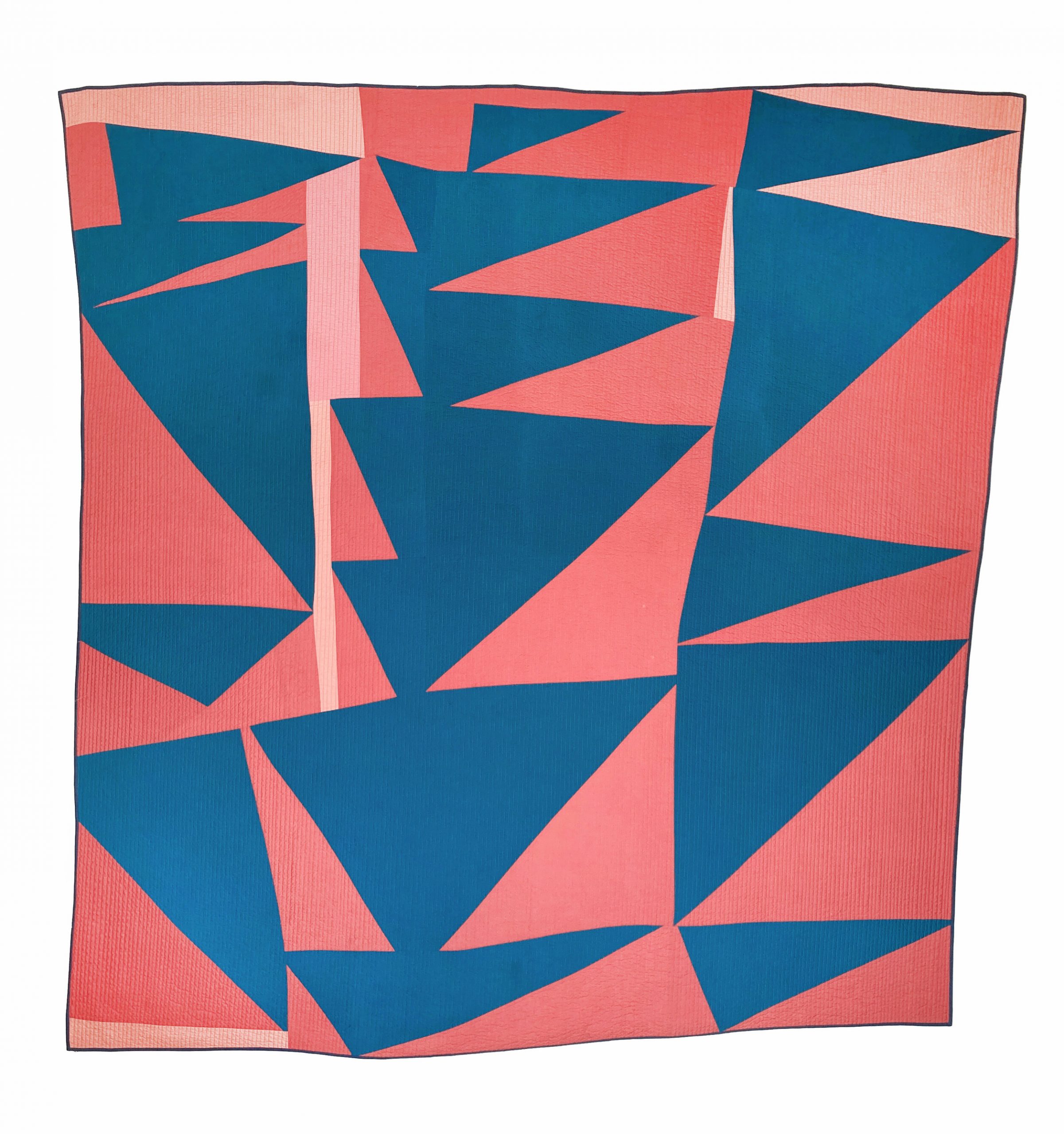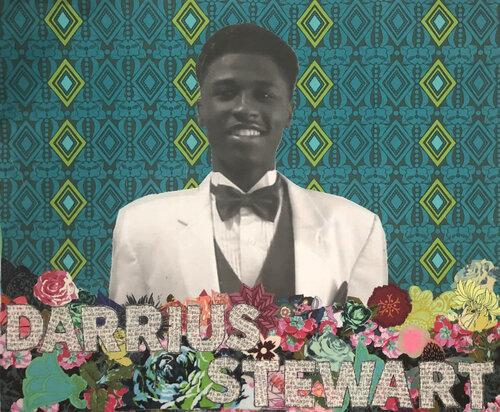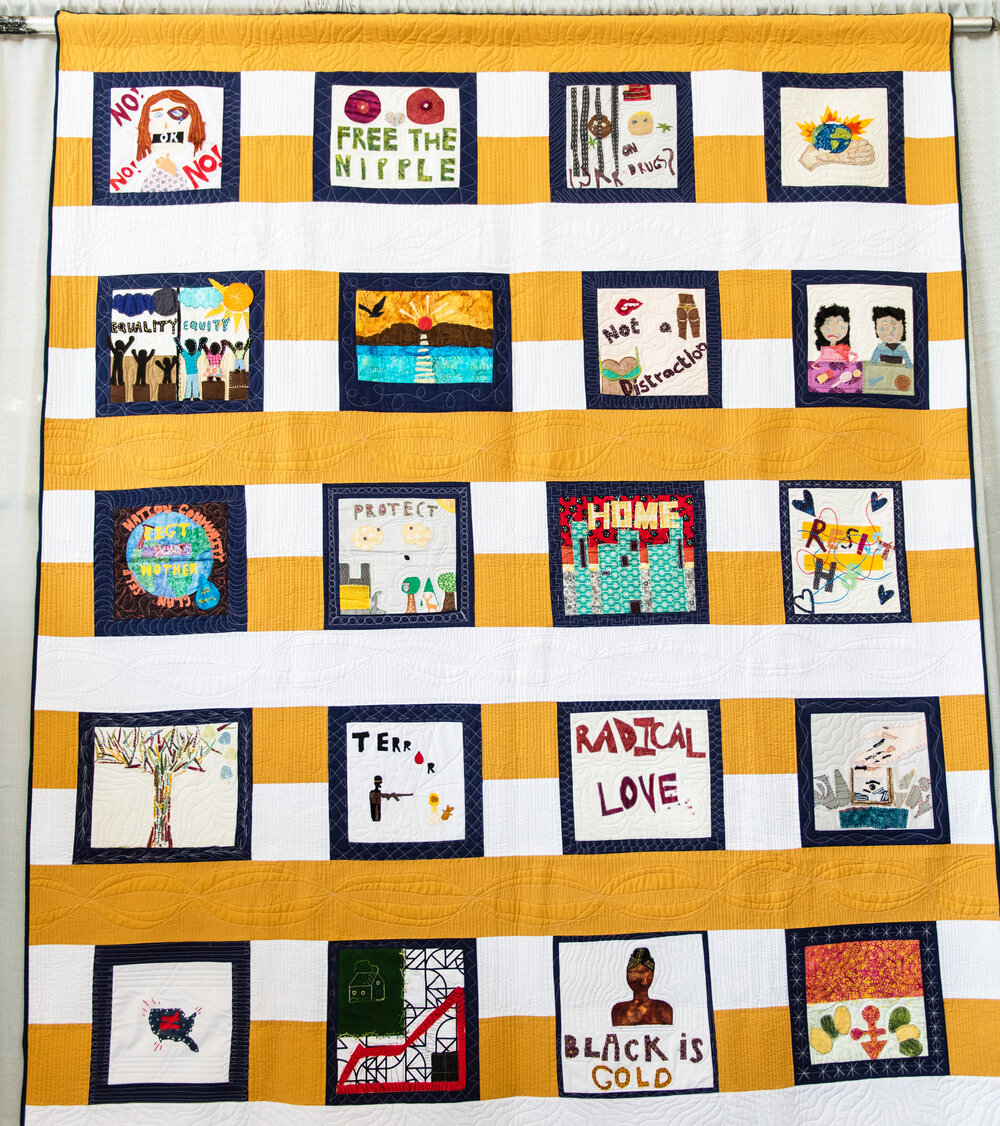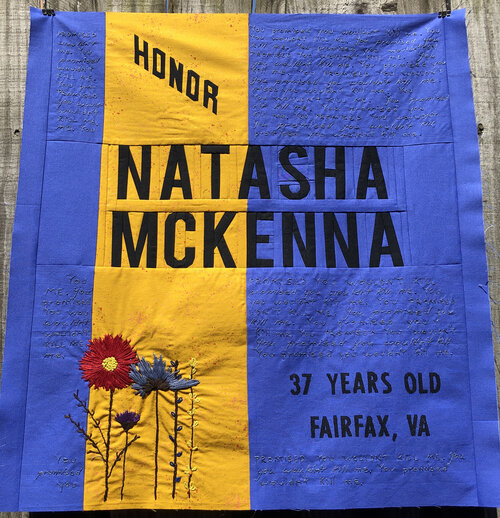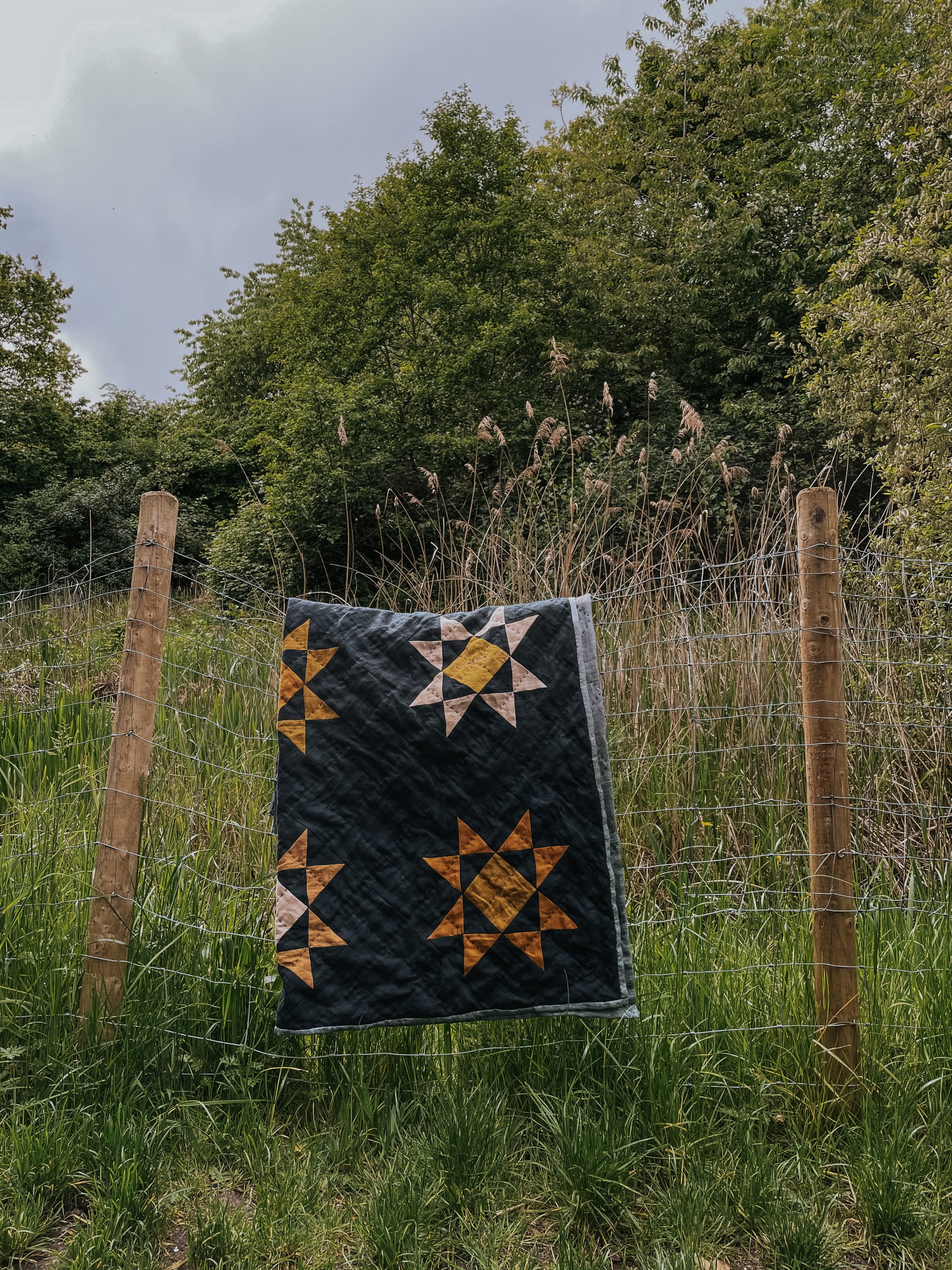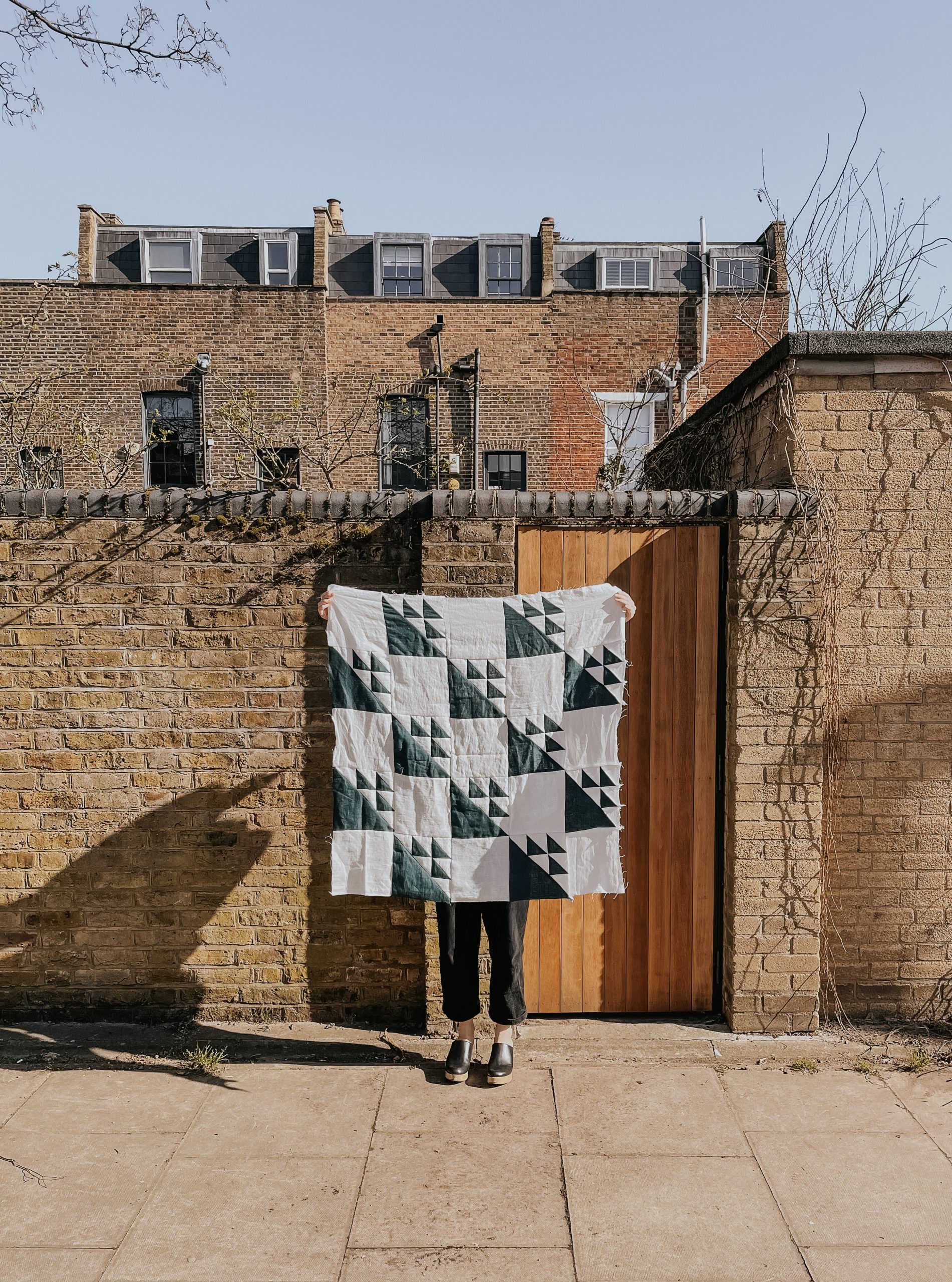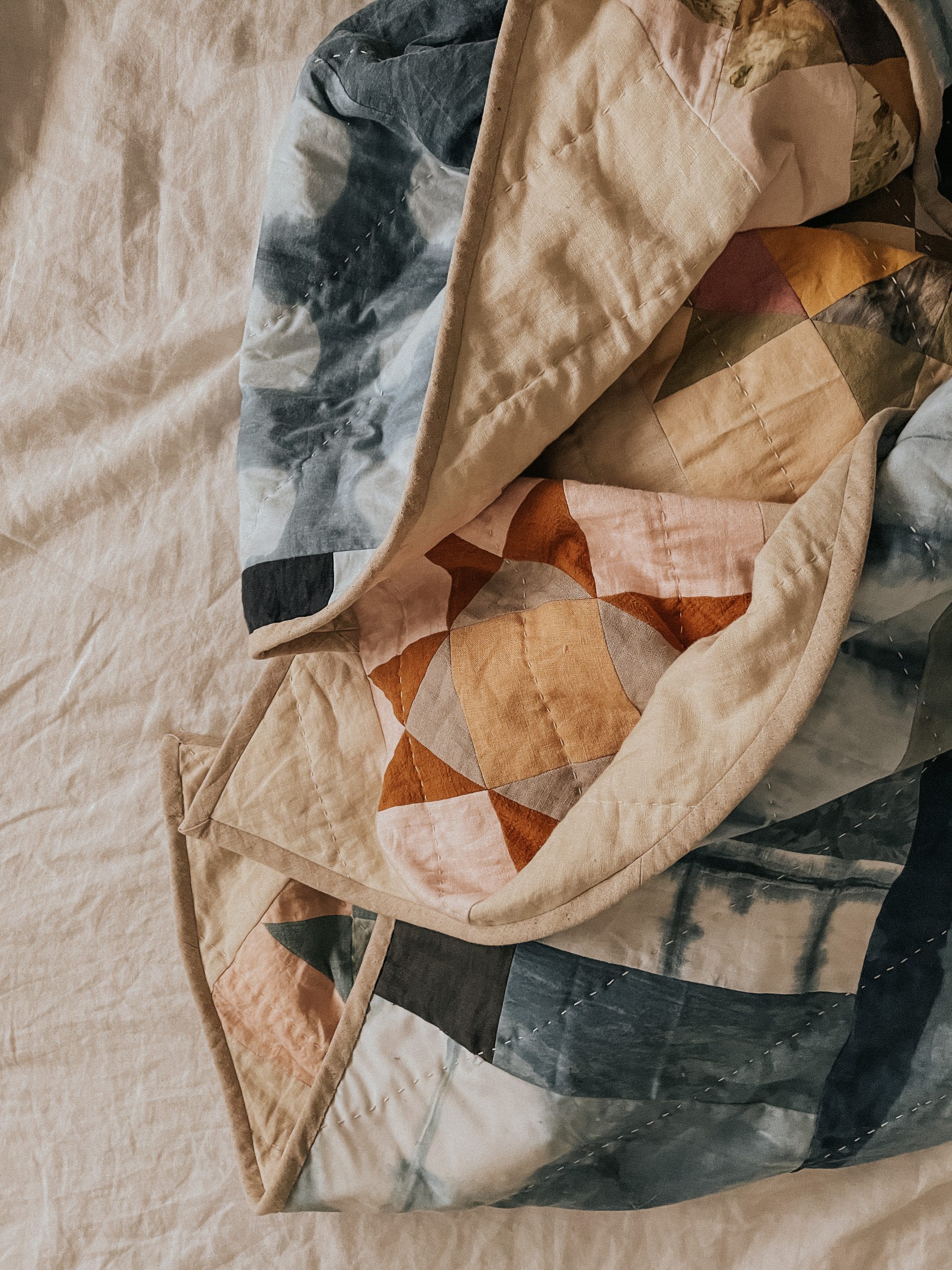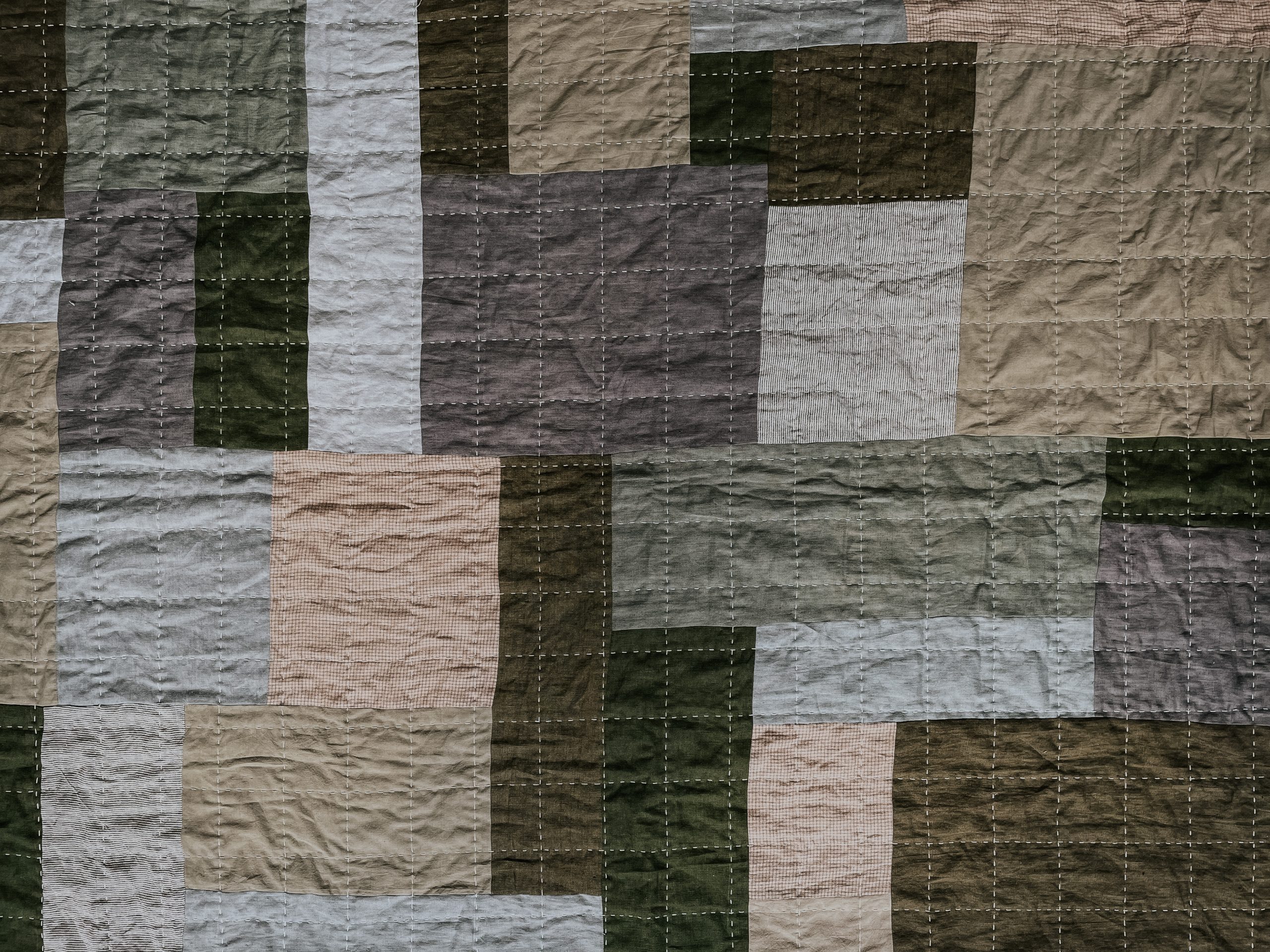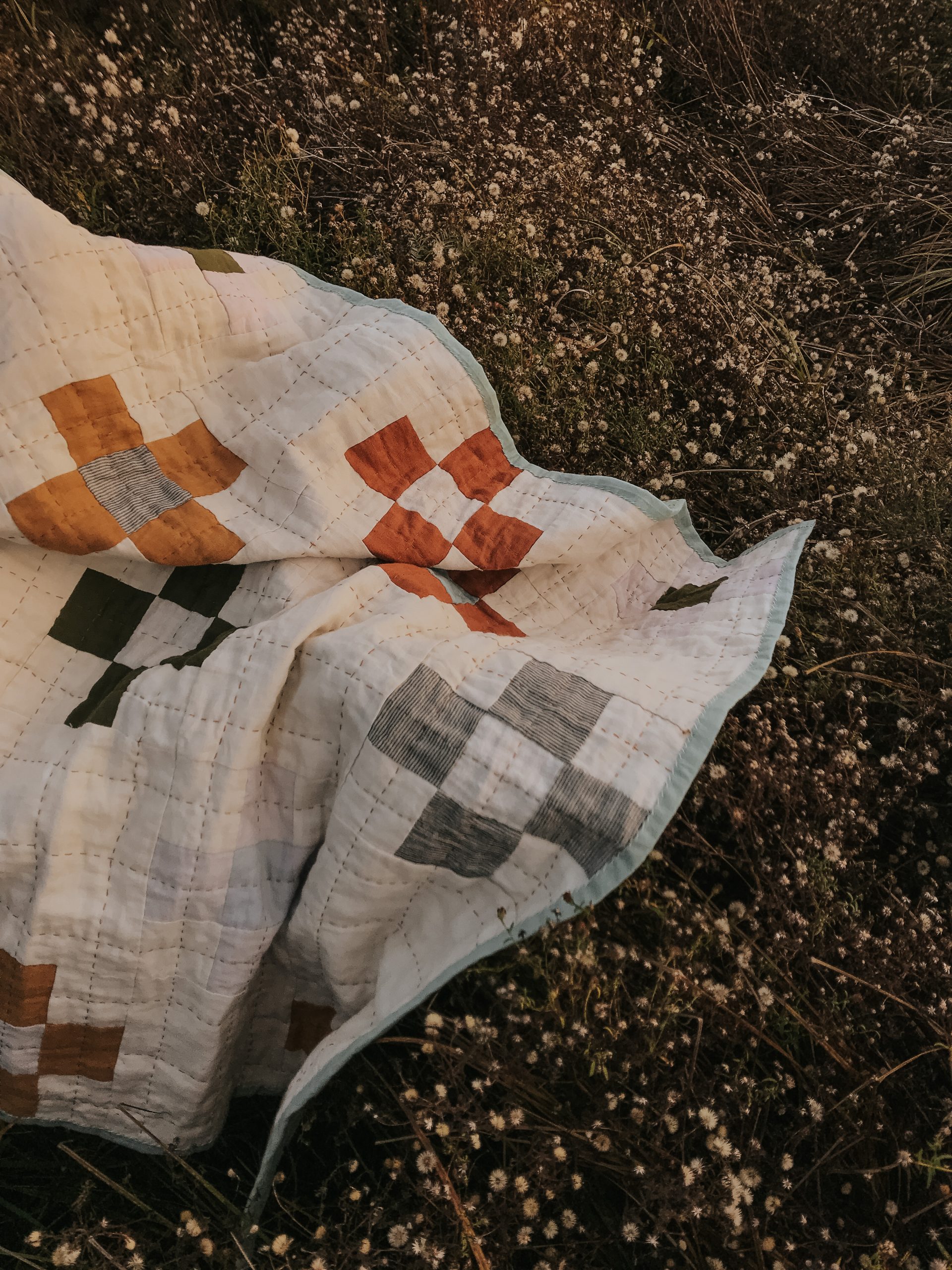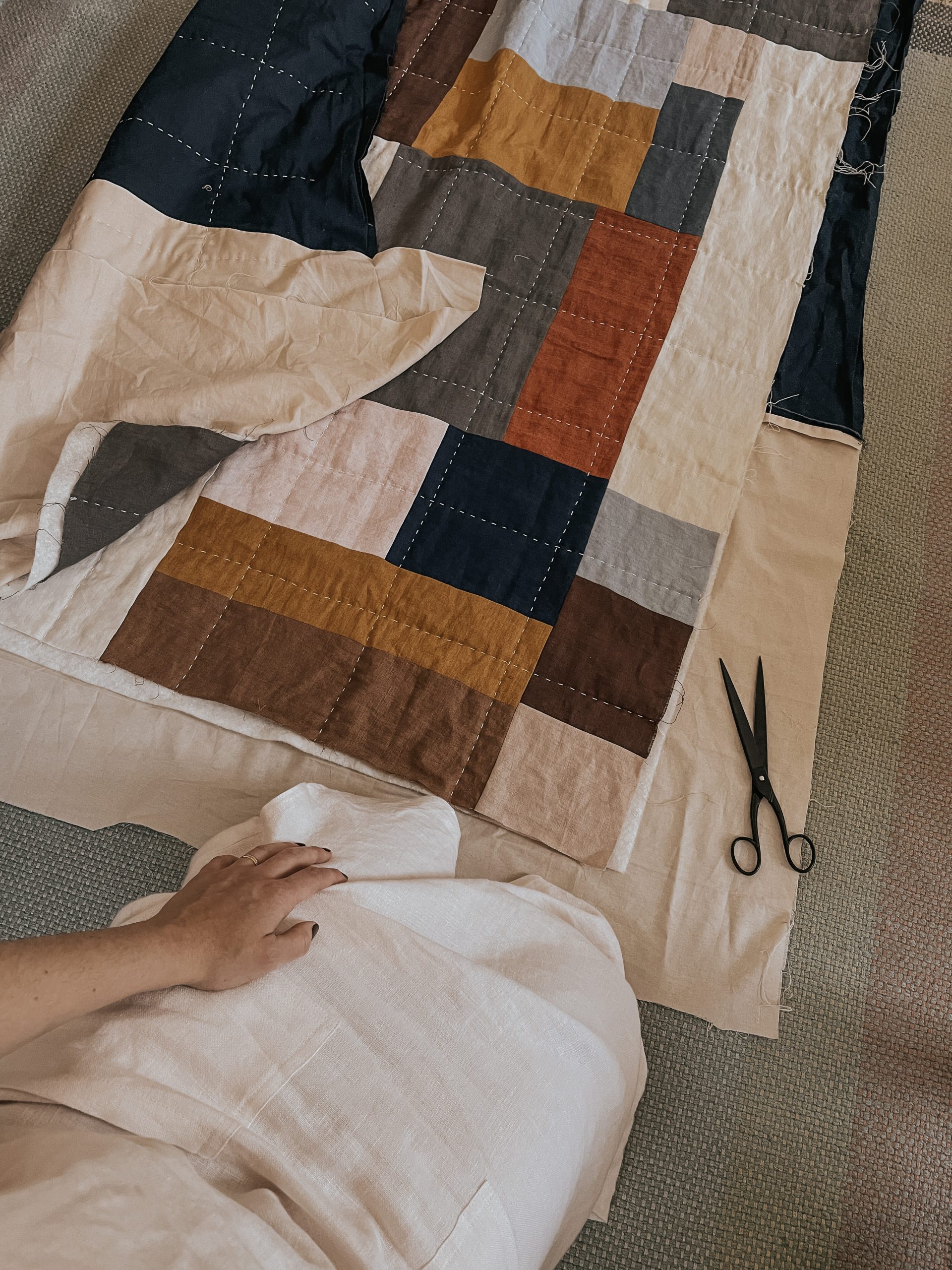Running Stitch Podcast – Season Three
 Running Stitch, A QSOS Podcast, is hosted by Janneken Smucker, Professor of History at West Chester University. Join us as we explore quilt stories, revealing the inner thoughts, feelings, and motivations of contemporary quiltmakers by drawing from Quilters S.O.S. — Save Our Stories, the long running oral history project created by the nonprofit Quilt Alliance in 1999.
Running Stitch, A QSOS Podcast, is hosted by Janneken Smucker, Professor of History at West Chester University. Join us as we explore quilt stories, revealing the inner thoughts, feelings, and motivations of contemporary quiltmakers by drawing from Quilters S.O.S. — Save Our Stories, the long running oral history project created by the nonprofit Quilt Alliance in 1999.
Quilts and quiltmaking serve as a lens to examine some of today’s most pressing issues, including activism, public health, politics, race, and the economy. We’ll dig into the QSOS archive to listen to excerpts from past interviews, and bring back interviewees to ask them about what they are working on and thinking about presently. Listen below, or wherever you get your podcasts!
Subscribe at: Apple Podcasts – Spotify – Google Podcasts – Stitcher
Season 3:
Season 3, Episode 1: Learning to Quilt with Sarah Steiner

Sarah Steiner
Credits:
Host & writer – Janneken Smucker
Producer – Emma Parker
Production assistance – Amy Milne
Music – Chris Eselgroth
Episode summary
Some people made sourdough, some people got pandemic pets. Sarah Steiner became the @pandemicquilter, learning how to quilt from youtube and Instagram, and making over 20 quilts since summer of 2020 after not previously knowing how to wind a bobbin. Sarah joins Running Stitch host, Janneken Smucker, to listen back to QSOS interview excerpts about how quilters learned their skills during earlier eras, sharing how the pandemic inspired her to quilt.
About our guest
Sarah Steiner lives in Goshen, Indiana, with her husband, Rob, and their two sons. She is a first grade teacher and now adds quilting to her list of hobbies which includes cooking, reading and walking her dog. Visit Sarah’s Instagram, @pandemicquilter.
Other featured interviews in this episode
- Judy Murrah Listen now
- Micki Batte Listen now
- Carol Taylor Listen now
- Toni Baumgard Listen now
- Ted Storm van Weedlen Listen now
- Visit the QSOS site to listen to more interviews
More Resources
- Visit Sarah’s Instagram
- Read a BBC article about quilting during the pandemic featuring Sarah
- Learn more about the Quilt Alliance and its mission
I do feel like it’s just a hug that you’re sending to somebody that’s just always there. They are different from another gift… so much different. Quilts are really special, and I’ve fallen in love with them.
-Sarah Steiner
Season 3, Episode 2: Song Quilts with Eliza Hardy Jones
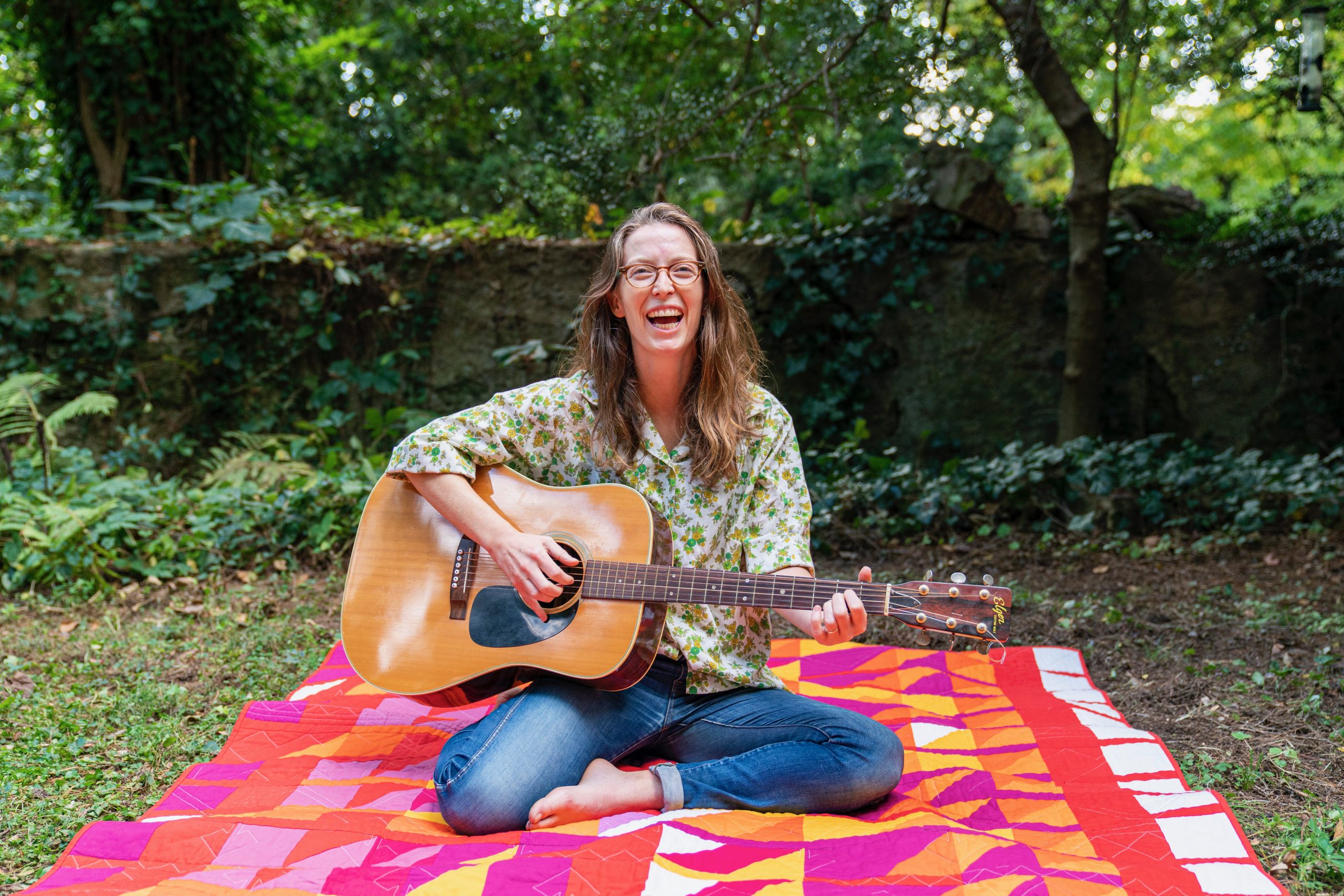
Eliza Hardy Jones
Credits:
Host & writer – Janneken Smucker
Producer – Emma Parker
Production assistance – Amy Milne
Music – Chris Eselgroth
Episode summary
One of the most exciting aspects of the quiltmaking tradition is that within it, artists continue to innovate the form. Eliza Hardy Jones, has done just that with her remarkable Song Quilts series, combining folk music, oral history, and her creation of a notation system that transcribes music into quilt form. If that sounds completely cryptic, join Eliza, a professional musician, as she joins Running Stitch host Janneken Smucker, to discuss her Song Quilts project. They also listen to QSOS interview excerpts from Michael Cummings and Ricky Tims, who both, like Eliza, incorporate music into their quiltmaking.
About our guest
Eliza Hardy Jones is a quiltmaker and internationally touring musician, singer, and songwriter from Philadelphia. She currently tours with Grammy-nominated artists Iron & Wine and Grace Potter, in addition to releasing her own original music. Jones has given talks on her quilts across the U.S. and in Russia, and her work has been featured in various quilt publications. According to Jones, she “inherited a love of stitch and song from a long line of wild women, musicians, and seamstresses.” Bio via the International Quilt Museum.
Other featured interviews in this episode
- Yvonne Porcella Listen now
- Margaret Docherty Listen now
- Carolyn Dahl Listen now
- Michael Cummings Listen now
- Ricky Tims Listen now
- Visit the QSOS site to listen to more interviews
More Resources
- Visit Eliza’s website
- Read more about the song quilts on the International Quilt Museum’s exhibit page
- See photos of Rosie Lee Tompkins quilts and Michael Cummings’ “I’ll Fly Away”
- Learn more about the Quilt Alliance and its mission
A lot of quilts are about storytelling. A lot of music is about storytelling. And I think that storytelling is one of the connective fibers of the human cultural tradition. We really need storytellers to help us make sense of where we are in the world…
-Eliza Hardy
Season 3, Episode 3: Going Pro with Zak Foster
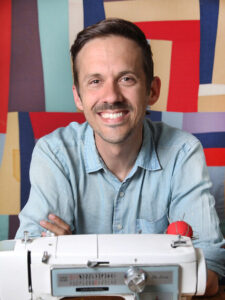
Zak Foster
Credits:
Host & writer – Janneken Smucker
Producer – Emma Parker
Production assistance – Amy Milne
Music – Chris Eselgroth
Episode summary
We often think of quilters as hobbyists, typically women who like to stitch beautiful bedcovers for use around the home, or to lovingly give to new babies or show off at quilt guild meetings. But for centuries, alongside hobbyist quilters have existed professional quilters, those who find a way to earn money for their craft and even quit their so called day jobs. Going pro requires a big leap of faith, especially for younger quiltmakers, like the ones we are featuring during season three of Running Stitch. And today’s guest has recently taken that leap.
A few months ago Zak Foster was still earning a living as a high school Spanish instructor, something he had been doing for 18 years. But this fall he made the leap to professional, and in this interview he shares with us his motivations for doing so, some of the ways he is marketing his services, and he’ll tell us about the quilt he helped make that recently appeared on the red carpet at the Met Gala.
About our guest
Zak Foster has been quilting and working with textiles prolifically since 2012 incorporating found fabrics and natural dyes into his work. He is drawn to preserving the stories of quilts and specializes in memory quilts. Originally from the Piedmont of North Carolina, he now resides in Brooklyn, New York, with his partner. More of his work can be seen at zakfoster.com.
Other featured interviews in this episode
- Laura Wasilowski Listen now
- Judy Martin Listen now
- Alex Anderson Listen now
- Pepper Cory Listen now
- Carolyn Crump Listen now
- Judy Haas
- Visit the QSOS site to listen to more interviews
More Resources
- Visit Zak’s website
- Learn more about the Quilty Nook
- Learn more about the Quilt Alliance and its mission
Perhaps the most iconic form of American textiles [is] a quilt. Quilts are just so democratic… Almost everybody has a quilt in their homes or a firsthand experience with quilts. There’s just this way of talking about what American is and what America can be…
-Zak Foster
Season 3, Episode 4: Sewing with Purpose with Sara Trail
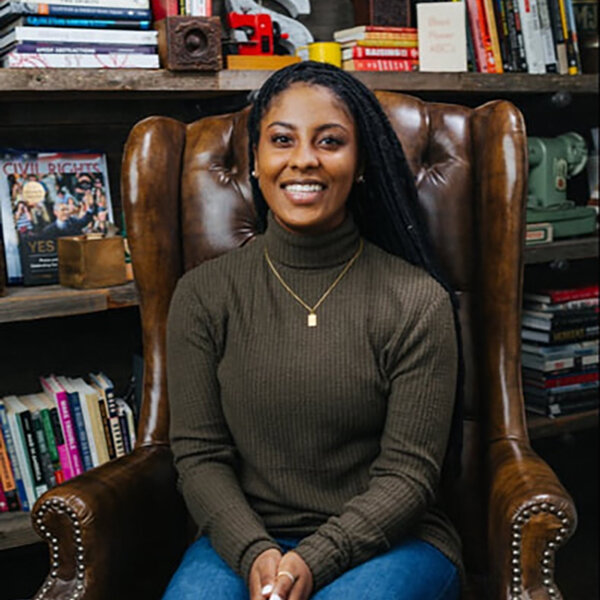
Sara Trail
Credits:
Host & writer – Janneken Smucker
Producer – Emma Parker
Production assistance – Amy Milne
Music – Chris Eselgroth
Episode summary
Sara Trail, and the non-profit organization she founded in 2017, the Social Justice Sewing Academy, is part of a long tradition of quilt artists who use quilts as part of their activist practices. Sara has been sewing and making quilts since she was a child, and transformed her work as a quiltmaker and fashion designer into that of community organizer. The Social Justice Sewing Academy has a mission to quote “empower individuals to utilize textile art for personal transformation, community cohesion, and to begin the journey toward becoming an agent of social change.”
Looking back to the nineteenth century, abolitionists, suffragists, and temperance activists all made quilts that espoused their beliefs, an essential outlet particularly during a time in which women could not vote or run for political office. Quilters continued this practice of using quilts in their activism into the twentieth century, projecting opinions and supporting causes, with Red Cross quilts, quilts celebrating New Deal programs, and quilts supporting political and social causes. Again in the late twentieth century, quilts emerged as a potent symbol of the feminist movement, along with loved ones who memorialized those who died of AIDS with quilt panels, and others who advocated against nuclear weapons, environmental destruction, and gun violence through their quilts. And quilts have remained an important means of communicating about racial injustice, a sad reminder that abolition, emancipation, and the civil rights movement have not in fact left us with a racially just society.
About our guest
Sara Trail learned to sew at the young age of 4, and is now a successful author, sewing teacher, and pattern and fabric designer. At age 13, she wrote a nationally published book, Sew with Sara, that teaches teens and tweens how to sew cute clothes and accessories for fun and profit. At 15, she starred in a nationally published DVD, Cool Stuff to Sew With Sara. She then designed two fabric collections, Folkheart and Biology 101, and a pattern collection with Simplicity, Designed with Love by Sara. Her pattern collection features prom dresses, backpack patterns, hoodies, and jackets as well as aprons and tote bags. While attending UC Berkeley, Sara created a quilt in memory of Trayvon Martin, and her love for sewing and passion for social justice intertwined. After graduating from the Harvard University Graduate School of Education, she founded the Social Justice Sewing Academy (SJSA). As Founder of SJSA, Sara actively travels to facilitate lectures and workshops. She is also key in developing and implementing the artistic vision of the organization.
Other featured interviews in this episode
- Marjorie Diggs Freeman Listen now
- Joy Major Listen now
- Jeanne Marklin Listen now
- Elizabeth Warner Listen now
- Shawn Dubin Listen now
- Visit the QSOS site to listen to more interviews
More Resources
- Visit the Social Justice Sewing Academy website
- Learn more about getting involved with SJSA
- Watch a Textile Talks interview with Sara Trail
America’s not like a melting pot. It’s like a patchwork quilt… no one wants to melt them all down into being one cloth… but a patchwork quilt represents and reflects and even highlights the differences in all the fabrics, the composition, the colors… the intersectionality of your identity is really seen in a patchwork quilt because every piece is different, but the beauty of them all together is what makes the quilt a quilt.
-Sara Trail
Season 3, Episode 5: Radical Quilt Histories with Jess Bailey
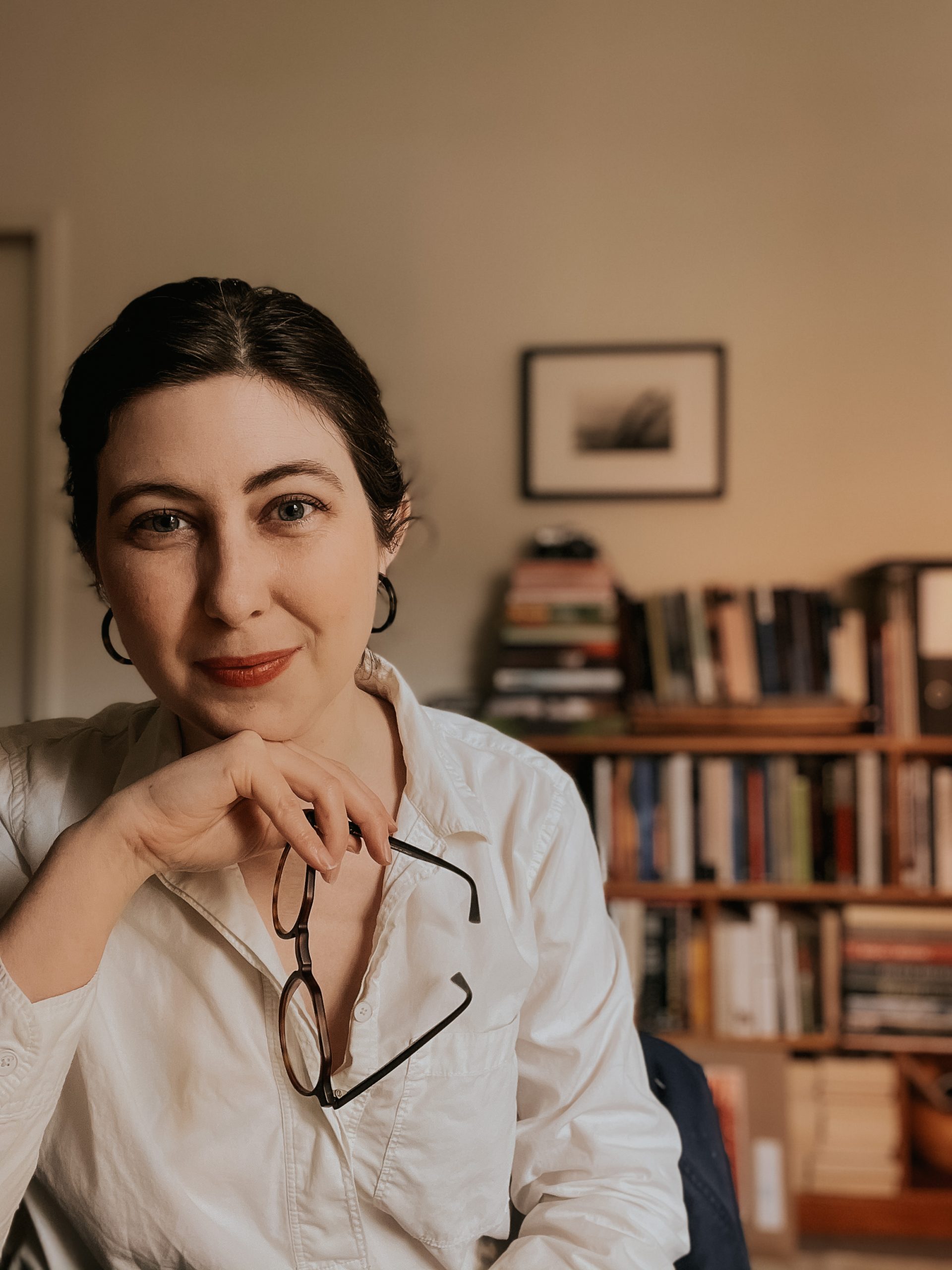
Jess Bailey
Credits:
Host & writer – Janneken Smucker
Producer – Emma Parker
Production assistance – Amy Milne
Music – Chris Eselgroth
Episode summary
Quilt enthusiasts have been writing about the craft’s history for over 100 years now, first focused on collecting and sharing patterns based on historic quilts, and later collecting and trading published patterns, in essence building an analog database of quilts. These women began to interpret and synthesize quilt history, eventually moving their newspaper clippings and mimeographed copies to digitized forms. Today, quilt history flourishes in thousands of books and articles, online spaces, and exhibit galleries that collectively have expanded our understanding of the history of quilts and quiltmaking. The QSOS oral history collection of the Quilt Alliance has further contributed to that history by recording and preserving interviews with living quiltmakers. And Running Stitch now mines that archive, sharing highlights from the collection of over 1200 interviews with you.
Jess Bailey is adding another layer to our understanding of quilt history. A young and relatively new quiltmaker, Jess makes quilts as a one woman studio called Public Library Quilts, a moniker she discusses with host Janneken Smucker in this episode. In addition to making quilts, Jess is an art historian currently living and working in London, where she studies medieval manuscripts. She combined her interest in quilts and historical research in her recently published zine, Many Hands Make a Quilt: Short Histories of Radical Quilting, published by Common Threads Press.
About our guest
The art historian and quilter behind Public Library Quilts (@publiclibraryquilts), Jess Bailey (she/her) believes knowing where art comes from has the power to shift present structures of harm. Jess is the author of Many Hands Make a Quilt: Short Histories of Radical Quilting from Common Threads Press, 2021. Currently finishing her PhD in the History of Art department at the University of California at Berkeley, she is based in London, UK as a research fellow. Jess’ academic writing addresses the relationship between state violence and interpersonal violence in European art before the 16th century. She has taught for the Prison University Project, UC Berkeley, and Universität Bern and guest lectured at Williams College and the University of Munich. Her research has been published by Kritische Berichte and Routledge Press. In her spare time she quilts using traditional folk art techniques passed down in her North American family. She is the co-founder of the LION Quilt project with gardener Sui Searle, @DecoloniseTheGarden, and the primary quilter of the resulting plant dyed Land in Our Names Quilt which raised over 18k GBP (25k USD) in Spring 2021 for the land and racial justice work of @LandInOurNames.
Other featured interviews in this episode
- Emily Parson Listen now
- Karen Alexander Listen now
- Jane Hall Listen now
- Teddy Pruett Listen now
- Carolyn Mazloomi Listen now
- Janet Hartnell Williams Listen now
- Visit the QSOS site to listen to more interviews
More Resources
- Visit the Public Library Quilts website and Instagram
- Order Jess’ book Many Hands Make a Quilt
- Learn more about the Land In Our Names fundraiser
- Read about Queen Lili’uokalani’s quilt
The joy and the history of quilts are inseparable. The history of quilts can help us find us find our kin, or sort of find this solidarity… And you know, I think I’ve really been amazed, since I started making quilts and talking to people about quilt history, how much more honest someone will be when they’re under a quilt. There’s something really powerful… when you start to look at these loops of what quilters will share and what people who are given quilts will share about the lives and about the history of their communities when they feel somehow protected, by some sort of quilt that’s been made for them, or they’ve made for someone they love.
-Jess Bailey
Season 3, Episode 6: Quilts Below the Radar with Roderick Kiracofe
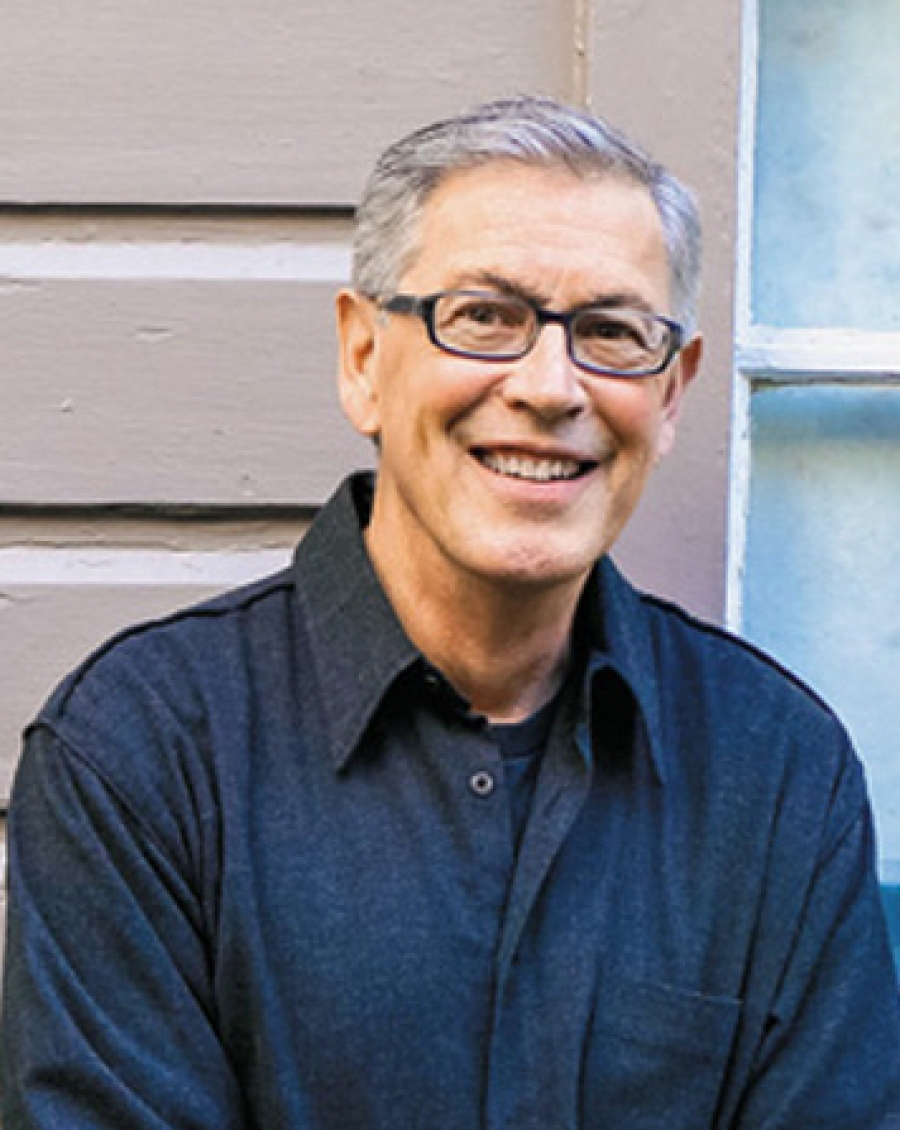
Roderick Kiracofe
Credits:
Host & writer – Janneken Smucker
Producer – Emma Parker
Production assistance – Amy Milne
Music – Chris Eselgroth
Episode summary
An interview with Roderick Kiracofe, quilt collector and author of Unconventional & Unexpected: American Quilts Below the Radar, 1950-2000, and historian Janneken Smucker about quilts that defy convention, the creativity of quiltmakers, and what makes a museum-quality quilt. Listen as Rod talks about his career as a quilt collector and seller, and about the weird, wonky, wonderful beauty of American quilts made after 1950.
This bonus episode was originally recorded as a Textile Talk in front of a live Zoom audience. See the quilts referenced in today’s episode in the Textile Talk recording here.
About our guest
I grew up in a small Indiana town in the 1950s, and that time and place certainly affected how I see the world. Our home did not have original art, but my parents certainly had style. I had no formal training in art, but my friendships with artists as I became a young adult led me to seek out and look at art. Objects, architecture, style, design and art fascinate me.
Household objects and photographs provide me with a lens to view times that came before. I love how quilts and photographs document people’s lives. The first quilt that I ever saw and slept under was in Los Angeles in 1973, and the next year was the first time I saw a quilt hung on the wall as art. My college girlfriend gave me my first camera, and I began to experience the world through a lens. My first boyfriend had quilts from his family, and together we started buying and selling them. More of my quilt narrative is found in the books I have authored and published. Unconventional & Unexpected, The American Quilt, Cloth & Comfort, Homage to Amanda, and The Quilt Digest each grew out of very simple ideas while influencing and impacting the next one. I never dreamed these projects would be created or anticipated the impact they would have.

